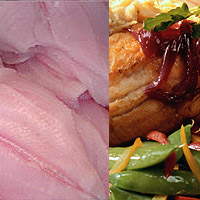Gluten Free
What does following a gluten-free diet mean? That you're embarking on an easy diet with a wide range of health-promoting effects. Instead of dwelling on what you’re giving up, consider that you’re going to enjoy a whole new world of delicious food options to meet your special dietary needs. You’ll be eating seasonally, choosing more fresh fruits and vegetables, focusing on meats, seafood, poultry, legumes, lentils, corn, and rice, and discovering fascinating ancient grains such as quinoa, amaranth, and millet. You’ll be able to eat potatoes, eggs, most cheeses, even chocolate (!)—and enjoy them without guilt because you’ll be taking good care of your body. In fact, you’ll probably end up eating—and feeling—better than ever!
Visit this page for more information about living Gluten Free
---
We carry a large variety of gluten free items, the brands listed below represent just some of the offerings we carry












Raw Foods
“Raw” is all the rage these days, but what does it mean to eat raw? And is it possible to get enough protein and other nutrients while following a raw diet?
Raw foods are those that have not been heated above 108°F to 118°F
Raw, defined
Most raw foodists eat only plant-based (vegan) foods, including vegetables, fruits, nuts, seeds, legumes, and seaweed. Raw foods are those that have not been heated above 108°F to 118°F, depending on who you talk to. The logic behind this is that many of the nutrients in foods are extremely sensitive to heat. This is especially true of the water-soluble vitamins, like the B-vitamins, folate, and vitamin C. As Katie McDonald, a raw food chef and certified Holistic Health Coach in Rhode Island puts it, “The more you do to a food, the less it does for you.”
Raw food advocates also look to the enzyme content of raw foods, saying that cooking destroys delicate enzymes that could otherwise go toward improving the digestion of the foods you’re eating.
---
In addition to our always fresh produce, we carry many more raw foods throughout our stores. Look for these brands and our Raw Foods section for more.



More Diets
Monkfish

Storing
Keep monkfish cool on the trip from the market to your house. Never let it stay unrefrigerated for long. To store monkfish, remove packaging, rinse under cold water, and pat dry with paper towels. Fish deteriorates when it sits in its own juices, so place it on a cake rack in a shallow pan filled with crushed ice. Cover with cling wrap or foil and set in the coldest part of the refrigerator. Monkfish will store well this way for up to two days. When well-wrapped, monkfish can be frozen for up to two months in a refrigerator freezer and for three to four months in a deep-freeze. Use lined freezer paper and wrap fish tightly from head to tail with at least two layers of paper. To thaw slowly, unwrap, place fish in pan, cover, and leave for 24 hours in the refrigerator. To thaw more quickly, place the whole fish (wrapped in a watertight bag) in a sink with cool running water, allowing about 30 minutes per pound (about 454g). For fastest thawing, use the defrost cycle of your microwave, allowing 2 to 5 minutes per pound, with equal standing time in between zaps (as one minute defrost to one minute resting).
Copyright © 2025 TraceGains, Inc. All rights reserved.
Learn more about TraceGains, the company.
The information presented in the Food Guide is for informational purposes only and was created by a team of US–registered dietitians and food experts. Consult your doctor, practitioner, and/or pharmacist for any health problem and before using any supplements, making dietary changes, or before making any changes in prescribed medications. Information expires December 2025.











